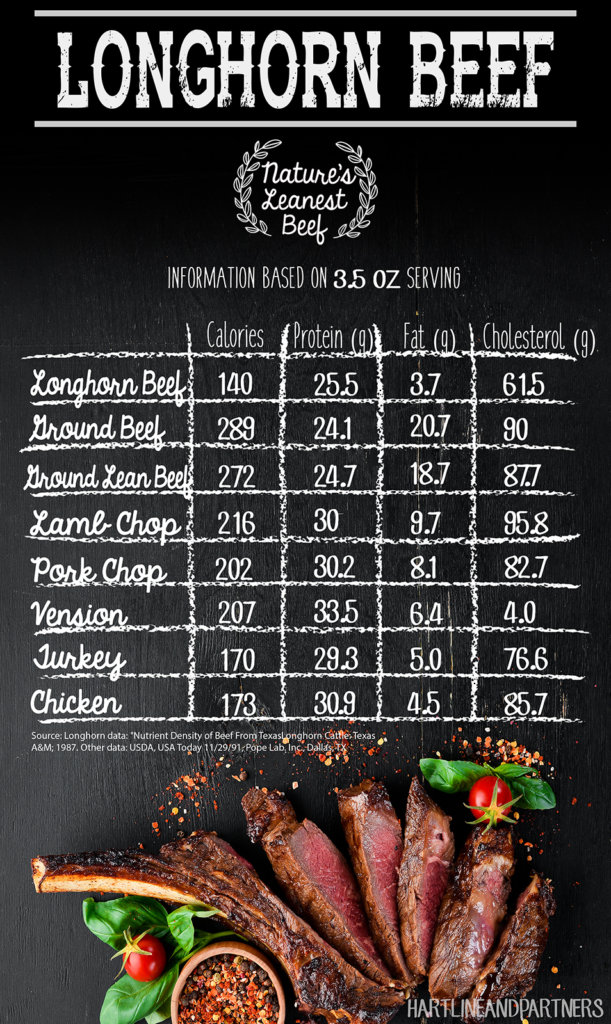Longhorn Beef: The Healthiest Choice
Texas Longhorn beef is the ideal beef choice for the health-conscious consumer. It is consistently superior to the Angus competitor in the fact it is genetically leaner. Longhorns marble excellent with a thin amount of waste back fat, which means the butcher does not typically have to trim as much fat from around the outside of the cut.

We, as consumers, are constantly faced with labels touting “pasture-raised,” or “grass-fed.” Unfortunately, these marketing messages are often misleading. Beef that is truly 100 percent grass-fed comes from cows that have grazed in pastures rather than being supplemented with processed feed for much of their life. Standards and labeling laws for grass-fed beef are controversial and confusing. The terms “grass-fed” or “pasture-raised” are allowed even if your beef came from cows that spent little or no time outdoors in a pasture setting.
U.S. beef labeled as “grass-fed” but not bearing USDA certification may be the result of various combinations of grass and grain feeding including grass finishing. If the label doesn’t specifically say “100 percent grass-fed,” or carry the USDA or similar certification, there’s no guarantee.
The difference in the diets of the cattle changes the nutrients and fats you get from eating the different types of beef. Grass-fed beef may have some heart-health benefits that other types of beef don’t have.
When compared with other types of beef, grass-fed beef has:
- Less total fat;
- More heart-healthy omega-3 fatty acids;
- More conjugated linoleic acid, a type of fat that’s thought to reduce heart disease and cancer risks;
- More antioxidant vitamins, such as vitamin E.
In short, the same way we are what we eat, a cow is what it eats – processed feed essentially being the cow version of a donut. If the cattle eat unhealthily, and we eat that cattle we, in turn, are unhealthy.
Including natural lean Longhorn beef in a heart-healthy diet can positively impact blood cholesterol levels. The breed tests lower in cholesterol and higher in protein, higher in vitamin A, CLAs and omega 3 fatty acids – all crucial in reducing cholesterol, diabetes, cancer, and high blood pressure.
